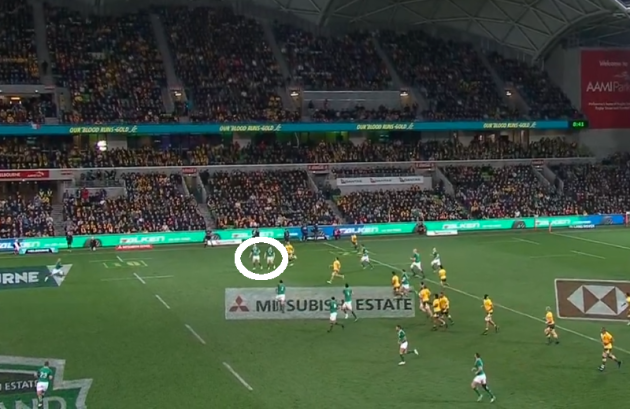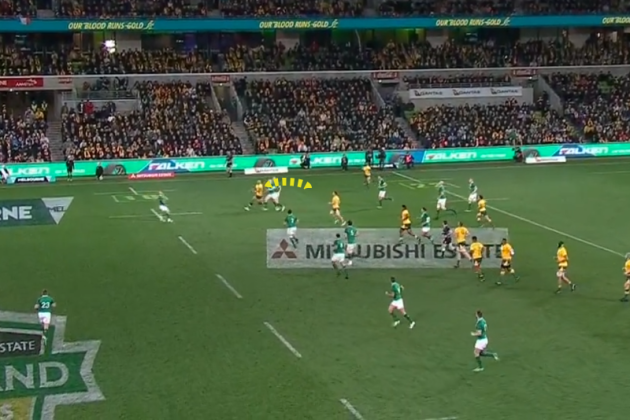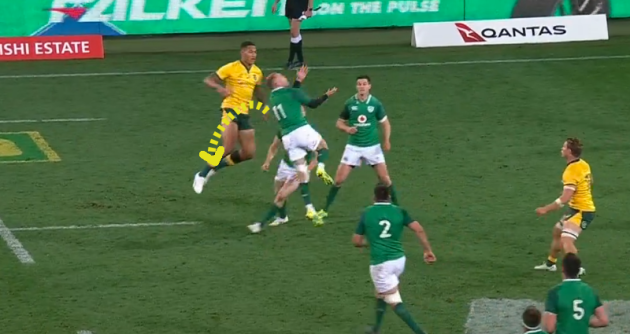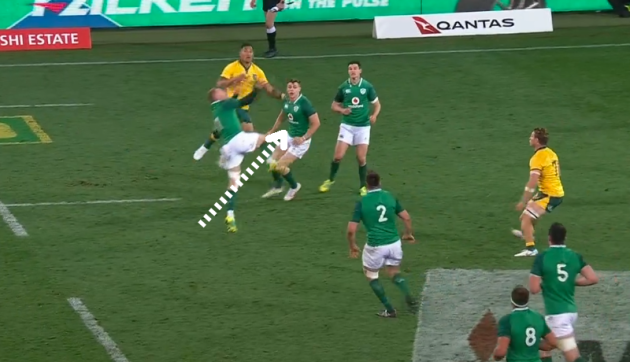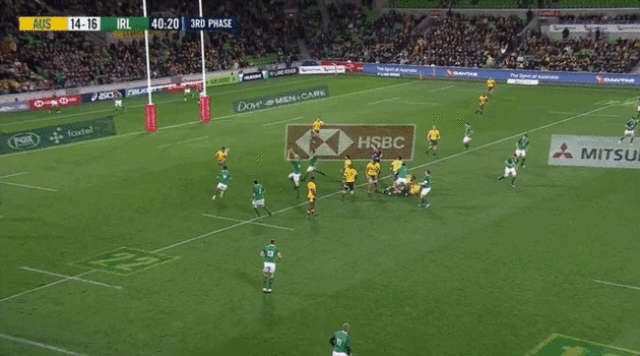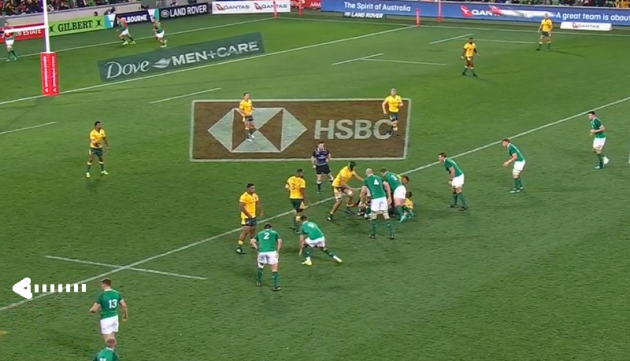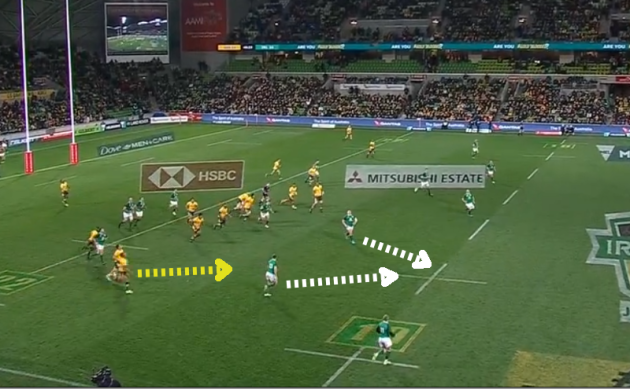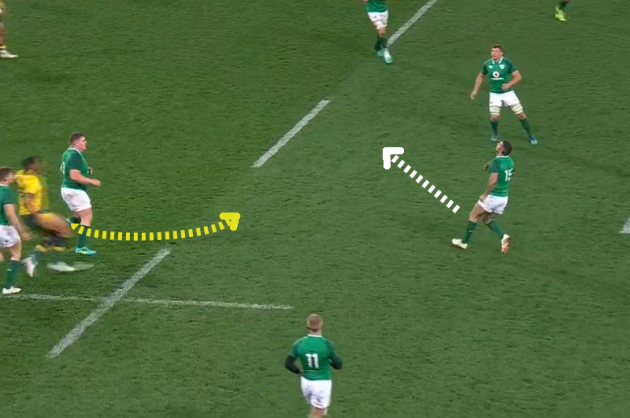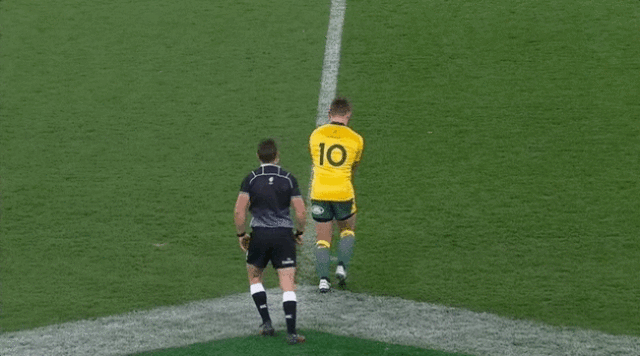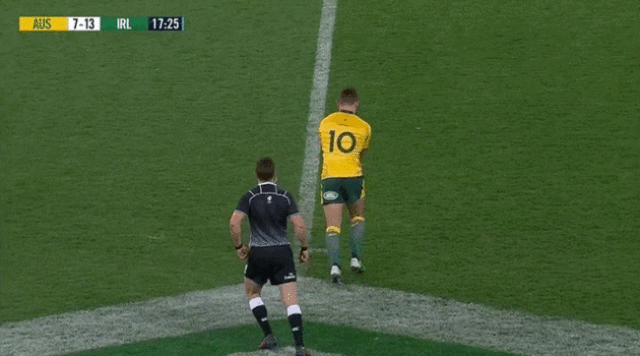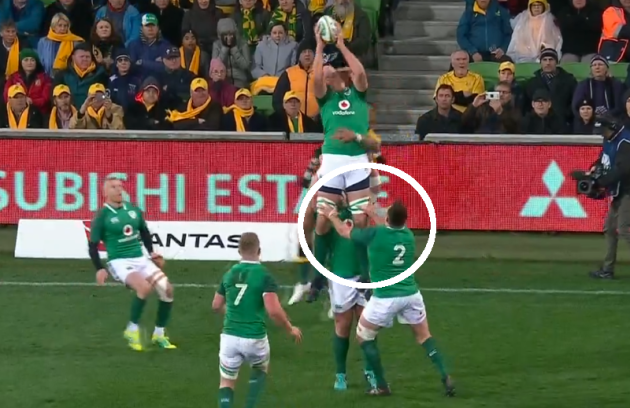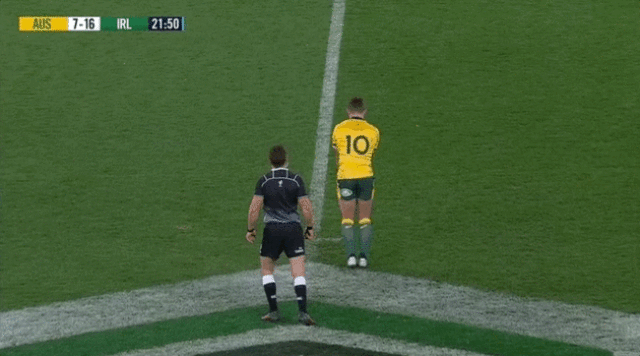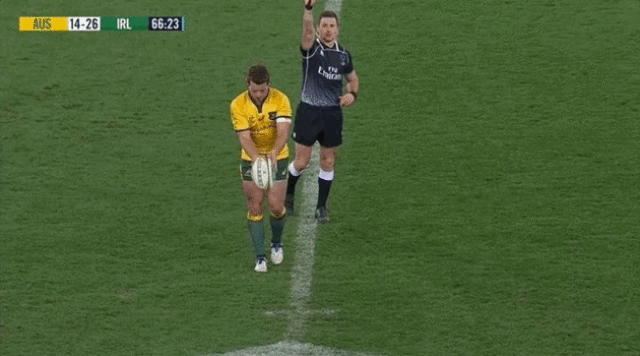HAVING CAUGHT THE ball from kicks eight times and done notable damage in the air in the Wallabies’ first Test victory against Ireland, it was a different story for Israel Folau in Melbourne yesterday.
Indeed, the Wallabies fullback didn’t catch a single kick in the game as Ireland managed to negate his aerial threat with some subtle tweaks.
Firstly, Ireland didn’t pursue the same tactic of kicking their restarts to Folau, which they had done four times in the first Test.
While that change ensured Folau didn’t have a chance to show his aerial skills directly under Ireland’s restarts, it did mean he was almost always on his feet to compete in the air when the Wallabies kicked to exit their defensive territory.
The first Test underlined exactly how dangerous Folau is in those scenarios when he got above Jacob Stockdale late in the game, his superb overhead catch leading towards David Pocock’s crucial try.
Folau consistently shifts out to the right wing when the Wallabies are in their defensive territory, as we see below.
This is a very similar scenario to the one in which Folau made his spectacular first-Test take, but Ireland deal with him far better here.
Click here if you cannot view the clip above
As Bernard Foley is in the process of kicking the ball for Folau to chase, note the actions of Garry Ringrose and Johnny Sexton on the left of Ireland’s defence.
Both Irishmen have their heads up looking at Folau, judging the running line he is going to take.
Ringrose and Sexton have the job of ‘escorting’ or ‘shepherding’ Folau – essentially, trying to ensure that Folau doesn’t have a direct run to where the ball is going to drop.
It’s subtle, but Sexton and Ringrose form something of a barrier in front of Folau as he tracks the ball in the air.
Their positioning means Folau has to slightly arc his running line to the outside of them…
… so that by the time he has actually jumped for the ball, Folau has gone beyond where he needs to be to compete for the catch.
With Sexton and Ringrose having bought him some breathing space, Keith Earls shows his skill underneath the high ball.
Earls times his arrival towards the ball perfectly, ensuring he doesn’t get too far underneath it – as Stockdale did the weekend before – and allowing himself to leap on the kind of 45-degree angle towards the ball that Folau is so effective with.
Earls bursts into the air off his left leg, getting his right knee up high, and meets the dropping ball as he hits the apex of his jump.
There is a hint of a near-fumble but Earls cleverly turns his body as he lands, ensuring tackler Michael Hooper can’t target the ball.
There are many examples of Folau being escorted by Irish players in this game, and it’s worth looking at one more just to underline the key points.
Click here if you cannot view the clip above
Even before Kurtley Beale has the ball to kick it, Ringrose is scanning for Folau.
Ringrose then adapts his line of retreat to ensure he can subtly buy time for Rob Kearney coming up to compete for the ball in the air.
Underlining that this is a collective effort and not just about the backs, we note tighthead prop Tadhg Furlong working back from the ruck and also picking out Folau.
Ringrose and Furlong adjust their running lines to ensure Folau is going to be delayed getting towards the ball again.
They create a narrow tunnel that Folau has to pick his way through, slowing and changing his line to round Furlong.
Again, the delay Ireland’s escort adds to Folau’s arrival means the Irish fielding player, Kearney in this case, can go up confidently to meet the ball and securely catch it.
It’s worth stressing that there was far less kicking in play in the second Test than the first, in which Australia out-kicked Ireland 26 to 22.
In yesterday’s game, the Australians kicked 11 times to Ireland’s 10.
The fact that Ireland dominated possession for long periods meant the Wallabies had fewer opportunities to employ kick-based tactics, while they were chasing the game in the final stages when they had extended possession and naturally kept the ball in hand.
Ireland’s drop from 22 kicks from hand in open play to just 10 underlines another facet of their game plan in the second Test that limited Folau’s influence.
While Schmidt’s team did also kick out of their own half at times, they had a strong focus on running the ball from deep on other occasions.
This meant Ireland weren’t always kicking towards Folau, who was lying in wait in the backfield.
Folau’s aerial ability makes him a real threat when chasing the Wallabies’ restarts and even his presence can be enough to force an error, as we saw with the very first kick-off of the game.
Click here if you cannot view the clip above
Folau actually trips over team-mate Marika Koroibete in this instance, but they apply enough pressure on the chase to force an error from Devin Toner, lifted by Furlong, as he jumps a little too far forward of where the ball drops.
The ball skims off Toner’s hands into touch and from the resulting lineout, the Wallabies score on seventh phase through Beale.
Given such a firm warning of the disastrous consequences of failing to gather in the Wallabies’ restarts, Ireland vastly improved in this area for the remainder of the game, even with Folau chasing hard to compete.
Click here if you cannot view the clip above
The example above is similar to the first but with a couple of key differences.
Firstly, Toner and Furlong plant and jump earlier, allowing the second row to make a comfortable catch, but he also gets helping hands from Niall Scannell.
Furlong is doing the heavy lifting at the back, but Scannell reacts to the restart better on this occasion and works rapidly across to help Toner into the air at the front.
The towering lock gets good height on his jump and even with Folau exploding up into the air, it’s a clean win for Ireland. Folau even risks a penalty concession by engaging with Toner around his torso.
The importance of the lifters on restarts can be easy to overlook and oftentimes they are not required, but Ireland were accurate in this element of the game as they limited Folau’s influence.
Click here if you cannot view the clip above
Foley directs his kick closer infield here, over Dan Leavy, but the openside flanker takes the ball superbly with a good lift from Scannell, who is essentially covering two roles.
The freakish Folau does still get almost as high as Leavy, even without a lift, but the Ireland back row is solid in the air and reels the ball in.
That was to prove very much the story of the evening for Folau on the Wallabies’ restarts as he failed to get any more success despite working hard on the chase.
Indeed, later on in the game, Toner even underlined the fact with an Israel Folau-esque over his head on one of the Wallabies’ restarts.
Click here if you cannot view the clip above
The42 is on Instagram! Tap the button below on your phone to follow us!



